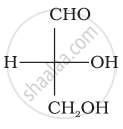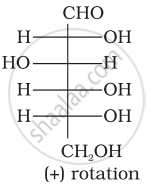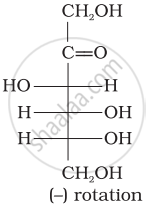Advertisements
Advertisements
प्रश्न
How are proteins classified on the basis of molecular shapes?
उत्तर
On the basis of molecular shape, proteins are classified into two types—fibrous proteins and globular proteins.
- Fibrous proteins:- They are insoluble in water, long, thread-like and tend to lie side by side to form fibres. The polypeptide chains are held together by hydrogen bonds. Examples: Collagen in tendons; keratin in hair, skin, nails, horn and feathers; myosin in muscle; fibroin in silk
- Globular proteins:- They are soluble in water and aqueous solutions of bases, acids and salts. They are folded to form a spherical shape, have intramolecular hydrogen bonding and have weak intermolecular forces as compared to fibrous proteins.
APPEARS IN
संबंधित प्रश्न
How is tripeptide formed?
Discuss the optical activity of lactic acid.
Differentiate between the following :
Fibrous proteins and Globular proteins
Write one difference between α-helix and β-pleated structures of proteins.
Differentiate between the following :
Peptide linkage and Glycosidic linkage
Which of the following biomolecules is insoluble in water?
The protein responsible for blood clotting is ____________.
The correct statement for protein haemoglobin.
Which functional group participates in disulphide bond formation in proteins?
Proteins are found to have two different types of secondary structures viz. α-helix and β-pleated sheet structure. α-helix structure of protein is stabilised by:
Dinucleotide is obtained by joining two nucleotides together by phosphodiester linkage. Between which carbon atoms of pentose sugars of nucleotides are these linkages present?
Optical rotations of some compounds along with their structures are given below which of them have D configuration.
| (I) |  |
| (II) |  |
| (III) |  |
α-Helix is a secondary structure of proteins formed by twisting of polypeptide chain into right-handed screw like structures. Which type of interactions are responsible for making the α-helix structure stable?
Structures of glycine and alanine are given below. Show the peptide linkage in glycylalanine.
\[\ce{\underset{(Glycine)}{H2N - CH2 - COOH}}\];
\[\begin{array}{cc}
\ce{H2N - CH2 - COOH}\\
|\phantom{......}\\
\ce{\underset{(Alanine)}{CH3}\phantom{...}}
\end{array}\]
Protein found in a biological system with a unique three-dimensional structure and biological activity is called a native protein. When a protein in its native form, is subjected to a physical change like change in temperature or a chemical change like, change in pH, denaturation of protein takes place. Explain the cause.
Assertion: β-glycosidic linkage is present in maltose,

Reason: Maltose is composed of two glucose units in which C–1 of one glucose unit is linked to C–4 of another glucose unit.
Explain the terms primary and secondary structure of proteins. What is the difference between α-helix and β-pleated sheet structure of proteins?
The main structural feature of proteins is
Each polypeptide in a protein has amino acids linked with each other in a specific sequence. This sequence of amino acids is said to be ______.
Peptide linkage is:
Presence of disulphide link gives rise to which structure of protein?
Out of the following, which type of interaction is responsible for the stabilisation of the α-helix structure of proteins?
Assertion (A): Proteins are polymers of α-amino acids connected by a peptide bond.
Reason (R): A tetrapeptide contains 4 amino acids linked by 4 peptide bonds.
β-pleated sheet structure in proteins refers to ______.
Write a classification of proteins with an example.
